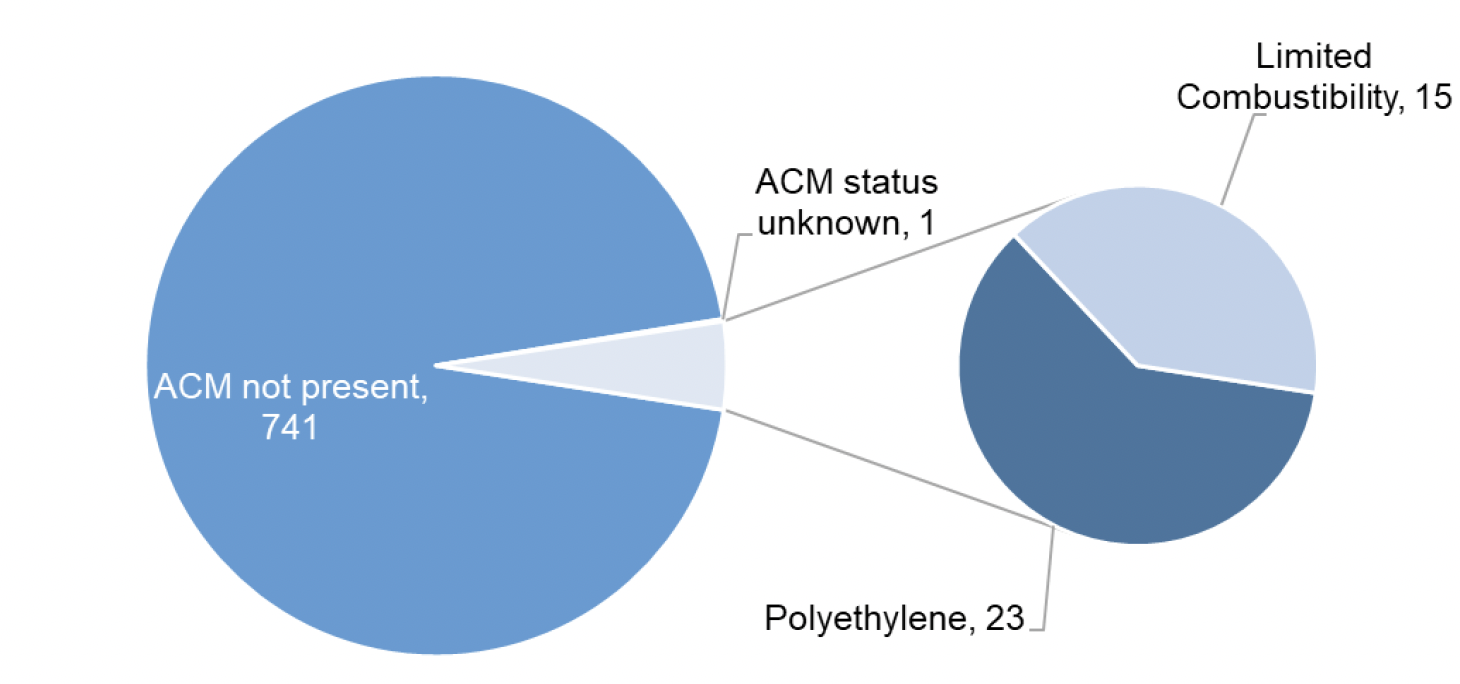High rise domestic buildings: inventory
Information on the construction and fire safety of high rise domestic buildings in Scotland.
This document is part of a collection
Data Returns: Construction
23. Data returns submitted to the HRI indicate that concrete frame (reported in 464 buildings, 60% of all records) is the most common construction type.[5] A range of other construction types were identified as follows, with more than one construction type per building possible: Large Panel System (LPS) – concrete (25%, 192 buildings); steel frame (22%, 169 buildings); LPS – cassette (4%, 28 buildings); and LPS – structural insulated panels (1%, 11 buildings). An alternative construction type, highlighted through free text response, was reported in 302 buildings, 39% of returns. However, these may overlap with the other categories listed. Where a multiple construction type was identified, 273 buildings had two construction types (35% of all buildings); and 61 buildings had three construction types (8% of all buildings).
24. Of those buildings reporting an LPS-type construction, 59 have a mains gas supply. 22 LPS-type buildings are missing mains gas information.[6]
25. Rendered External Wall Insulation (EWI) is reported on 435 buildings (56% of all buildings).[7]
26. Returns submitted to the HRI indicate that Aluminium Composite Material (ACM) panels are present in a small number of buildings (5% where ACM questions answered, 38 buildings, a decrease from 51 in 2020). Of these, 23 buildings reported polyethylene type ACM panels (ACM-PE), a combustible material. A further 15 buildings reported Euro-class A2 ACM (Figure 3). The reduction in numbers of buildings with ACM is due to re-analysis of information by local authorities of 13 buildings. The relevant panels are a composite panel with insulation rather than a filler between thicker aluminium sheets.
27. ACM is a generic name for a type of flat panel that consists of two thin aluminium sheets (0.5mm) held together with a core filler, typically between 3 and 7mm thick, see table 1 in key findings. As noted in table 1 in the key findings above Category 3 is the highest risk most combustible panel, whilst category 1 is limited combustibility and largely mineral filler that meets the Euro-classification A2.
28. Work is currently underway to carry out remediation on 11 buildings with ACM-PE (category 3) material. This work will improve the safety of 321 flats. The work will take around two years to complete.

29. Other types of external wall panels are reported in 491 buildings (63% of all buildings). Where the type of external wall panels is identified, types include: masonry infill (35%, 167 buildings); zinc (11%, 55 buildings); high pressure laminate (20%, 95 buildings)[8]; terracotta tiles (8%, 37 buildings); stone (7%, 33 buildings); solid metal panels (7%, 33 buildings); rainscreen insulation board (6%, 27 buildings); other metal composite (5%, 23 buildings); granite (3%,14 buildings); slate (1%, seven buildings); and concrete panels (<1%, two buildings). In 71% of buildings where external wall panels were reported, other types of external wall panel are identified using free text responses. The return for one building was limited and did not include details on external walls.
30. In total, 239 buildings are reported with insulation materials exposed in the external wall cavity (31% of all buildings). Where the type of exposed insulation is identified, stone wool is the most commonly reported (84 buildings), representing 35% of buildings where exposed insulation is reported, and 11% of all buildings overall. However, 54% of buildings where exposed insulation is reported returned free text responses, which may overlap with other categories. Phenolic foam is reported for 29 buildings, polyisocyanurate in five buildings, and four buildings are reported with exposed expanded polystyrene insulation.
Contact
Email: simon.roberts@gov.scot
There is a problem
Thanks for your feedback